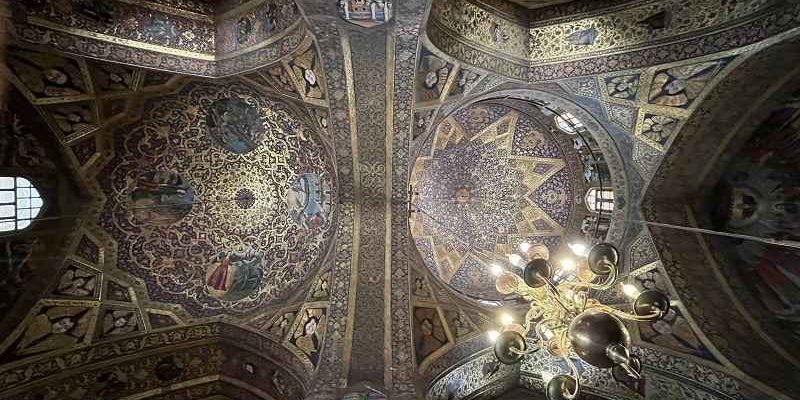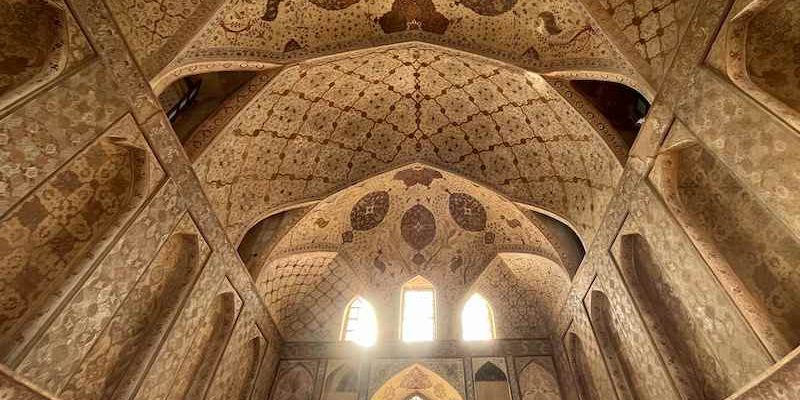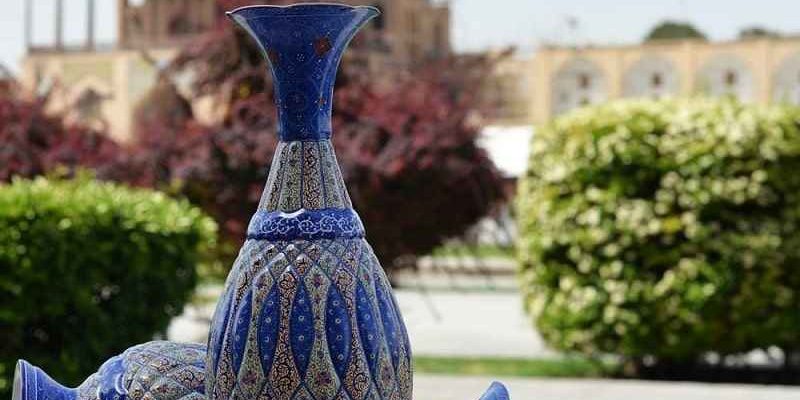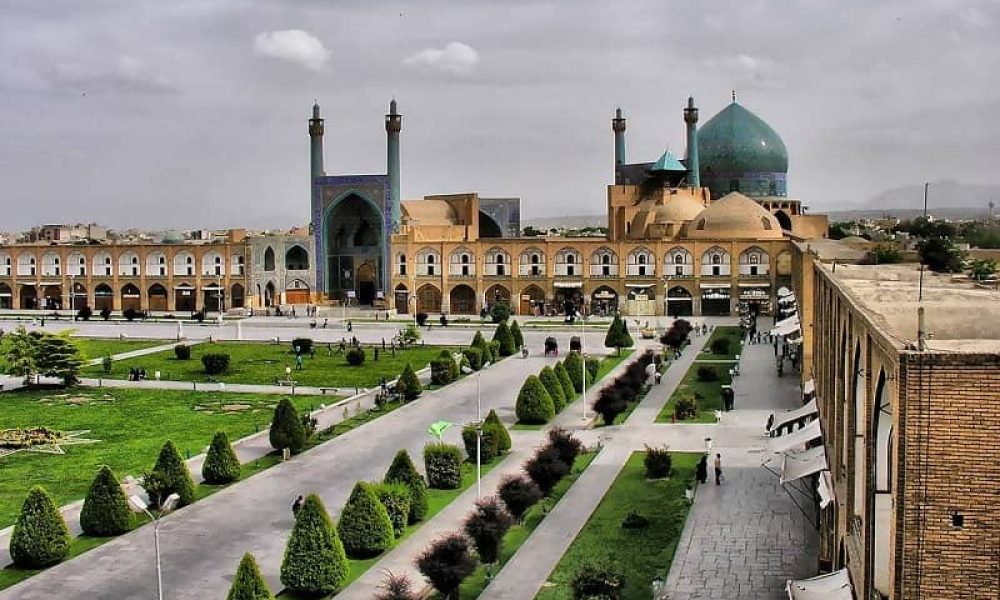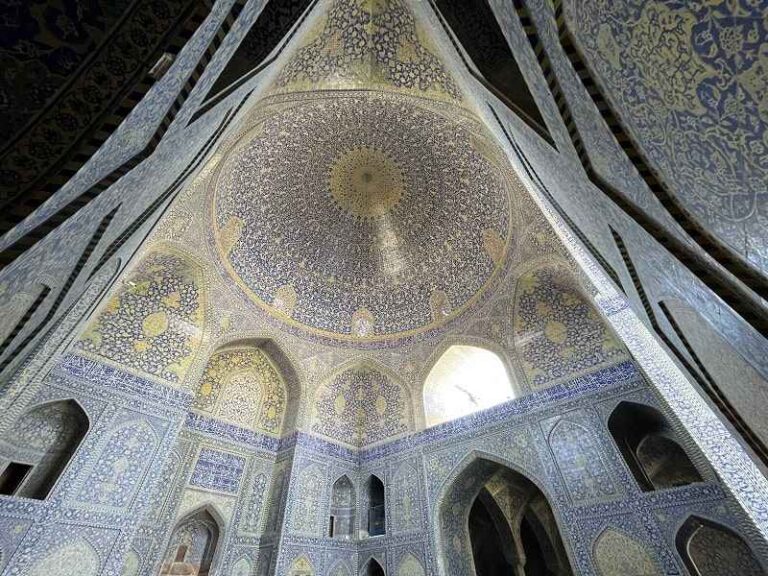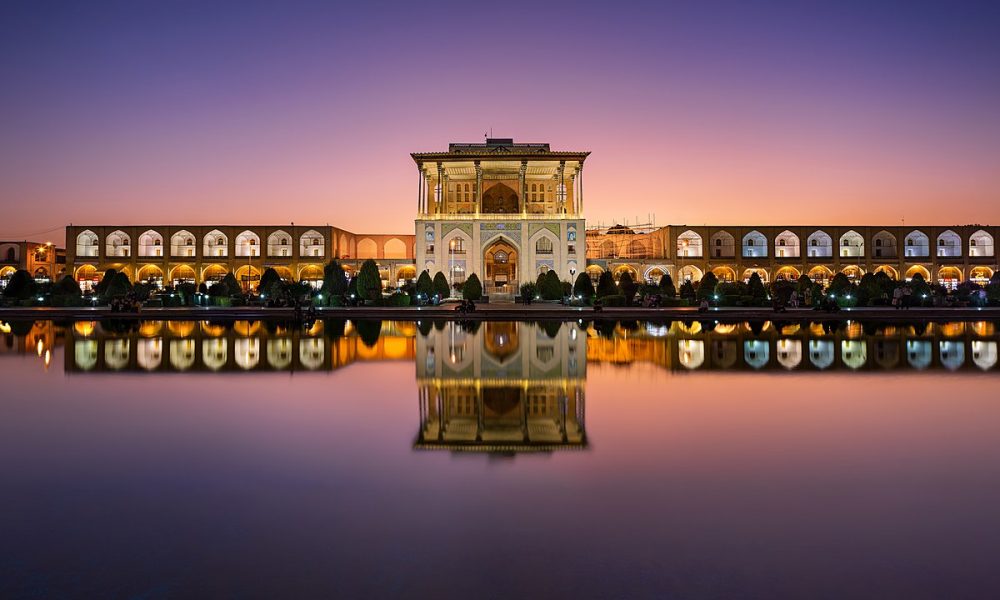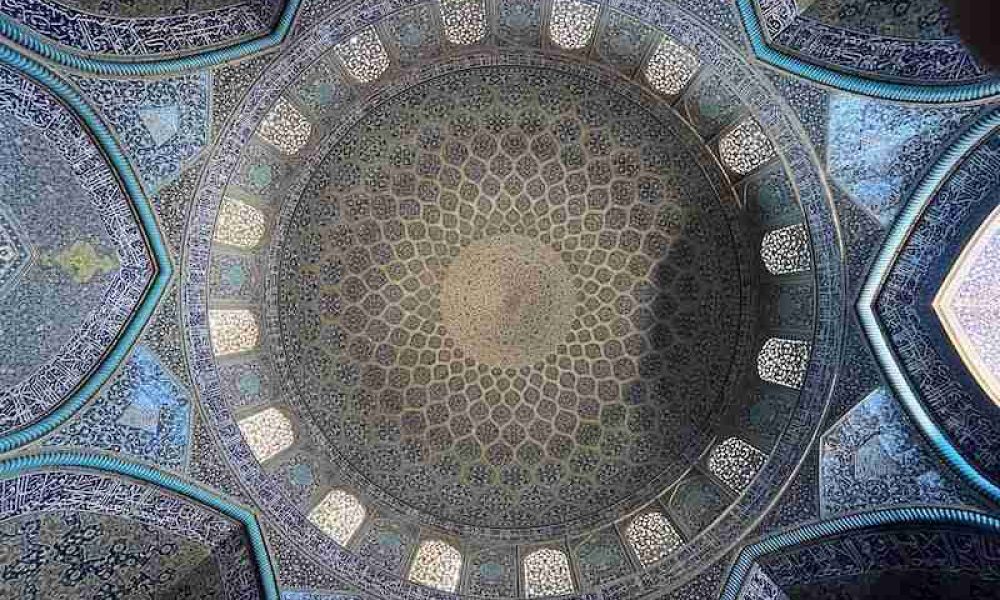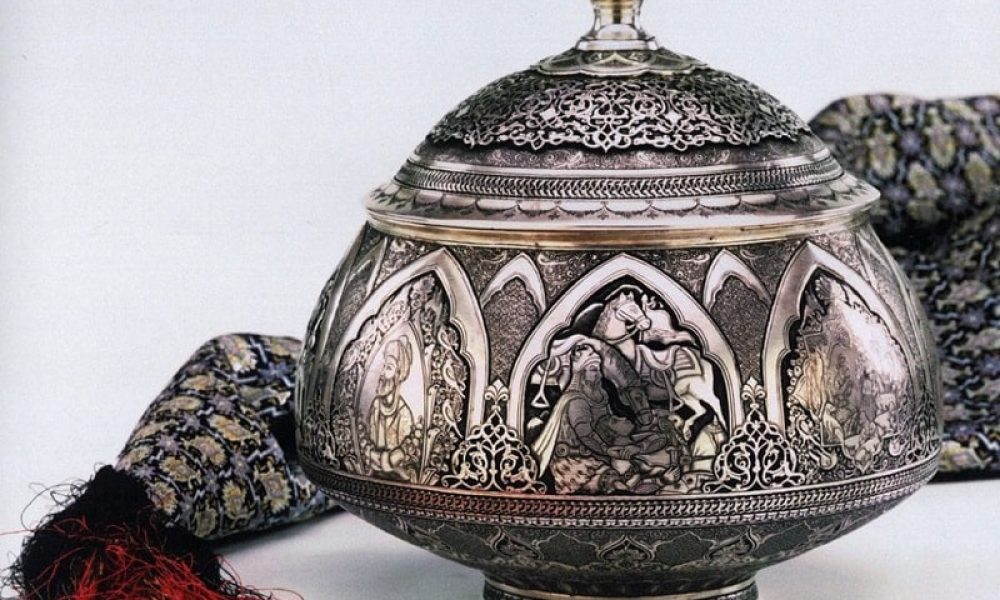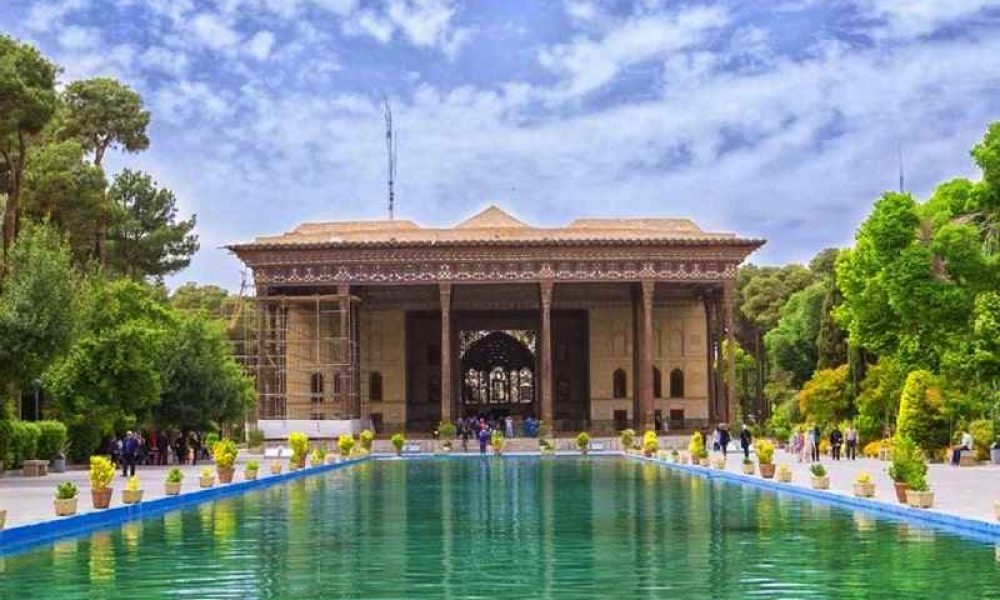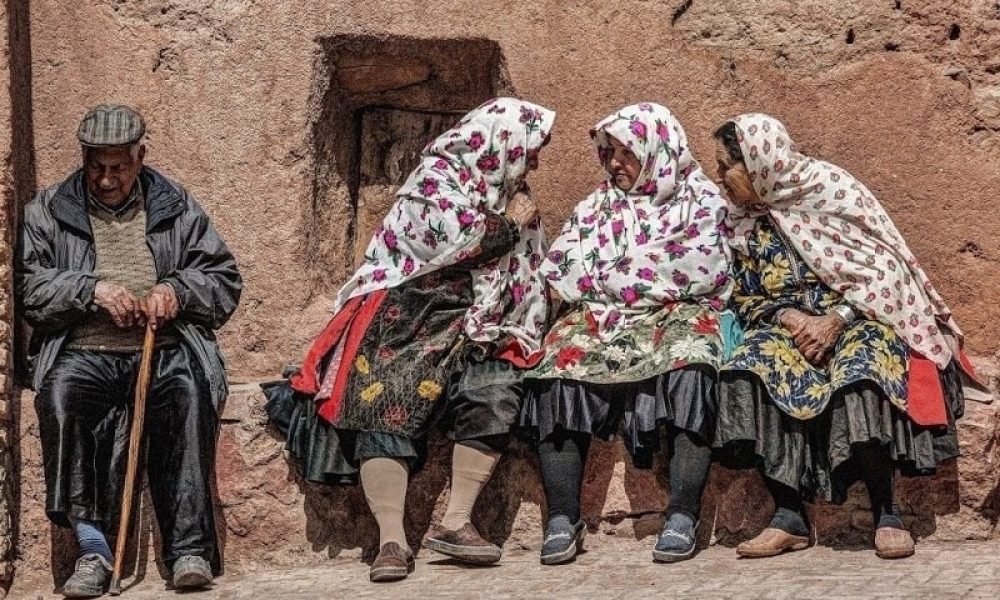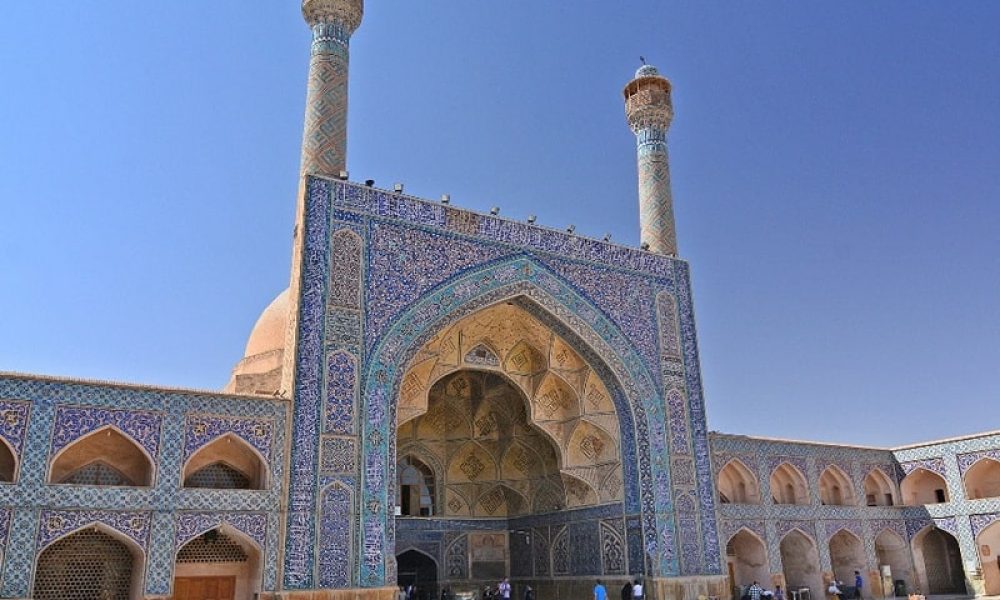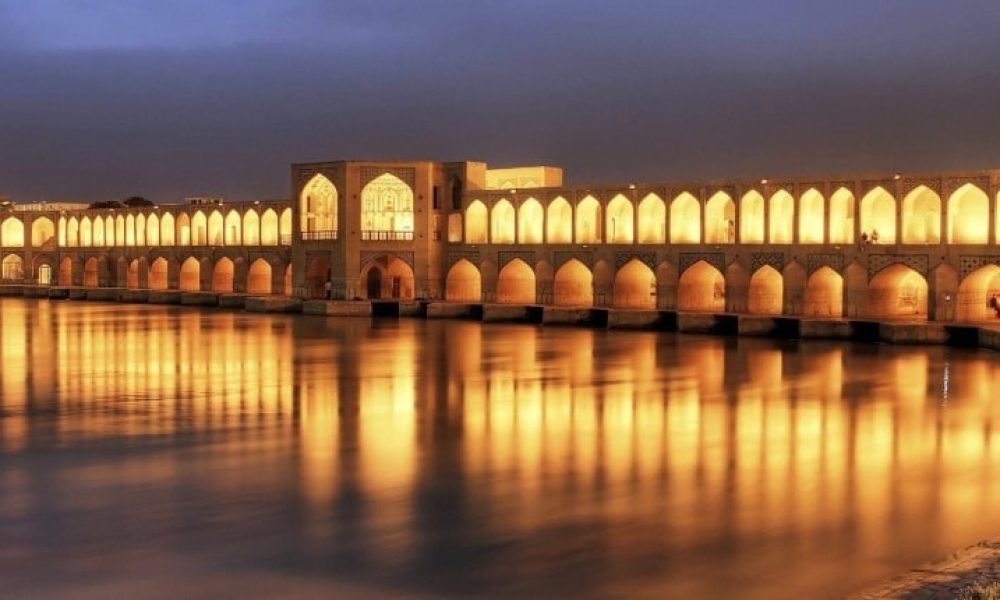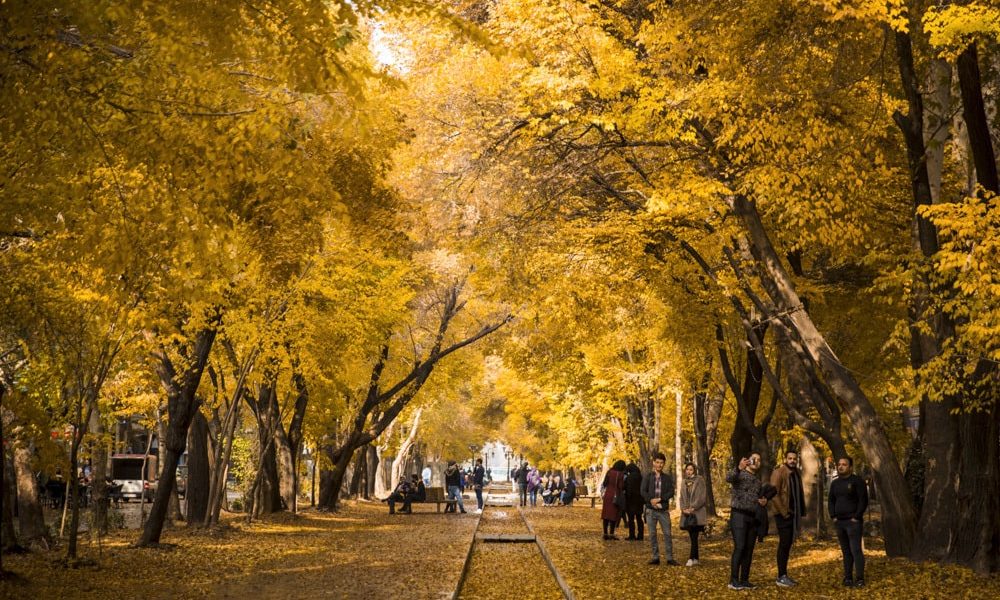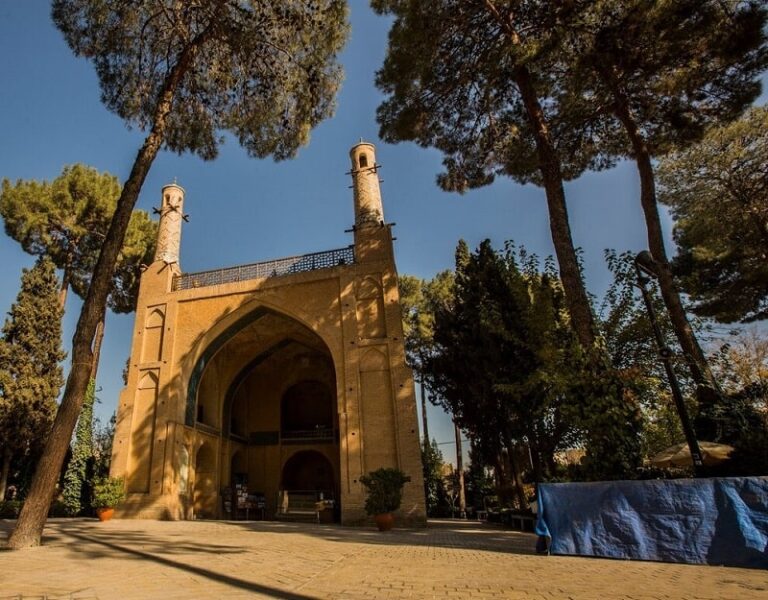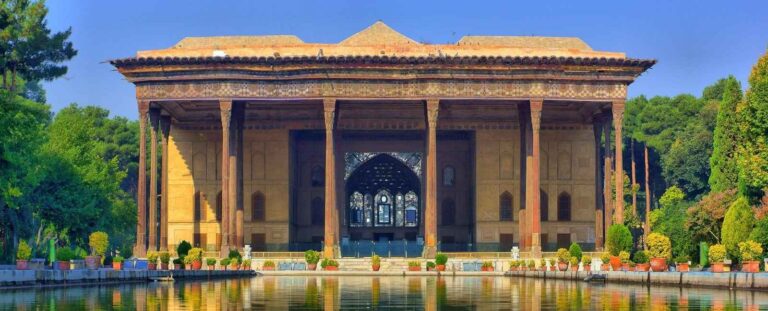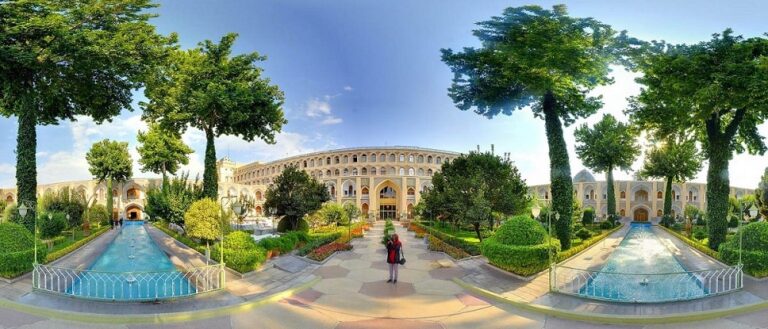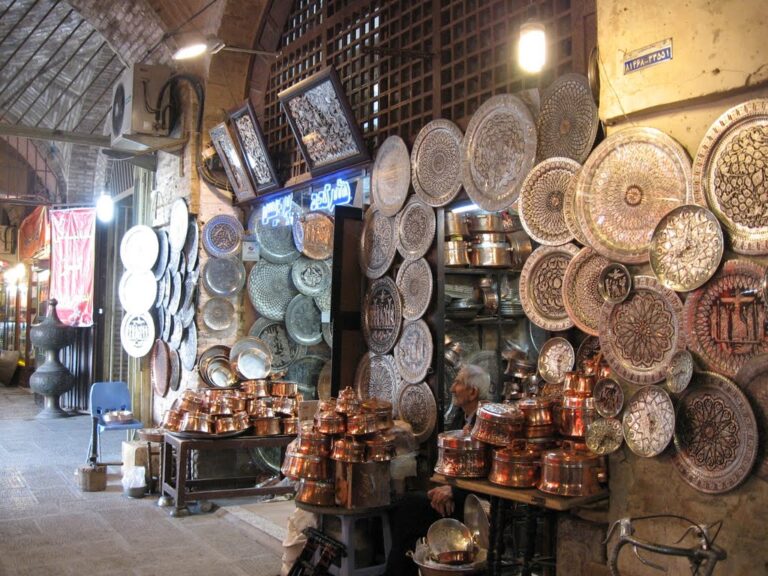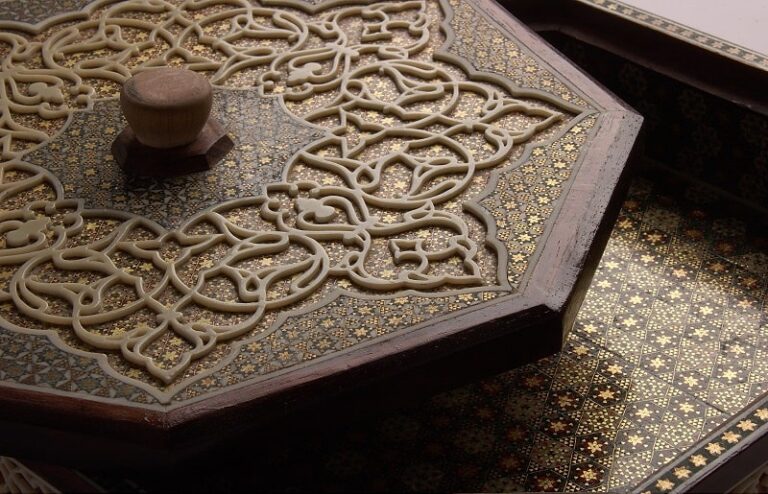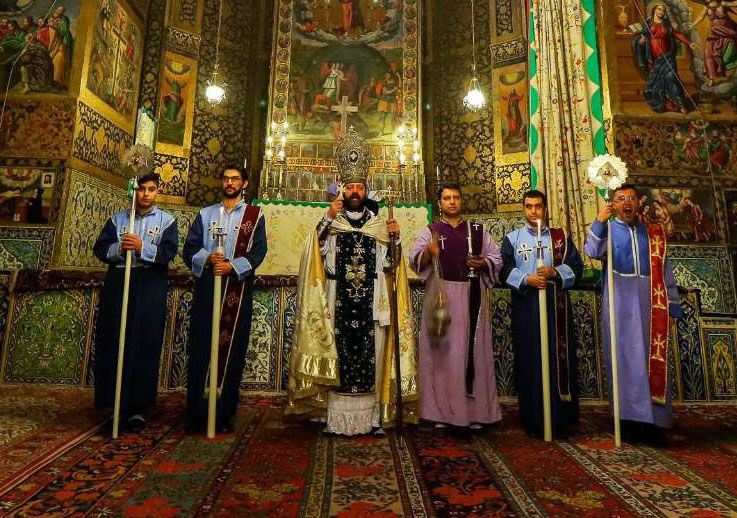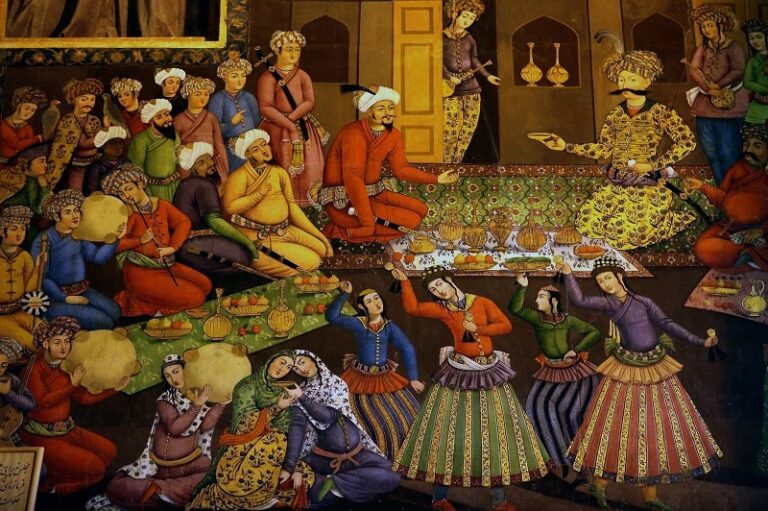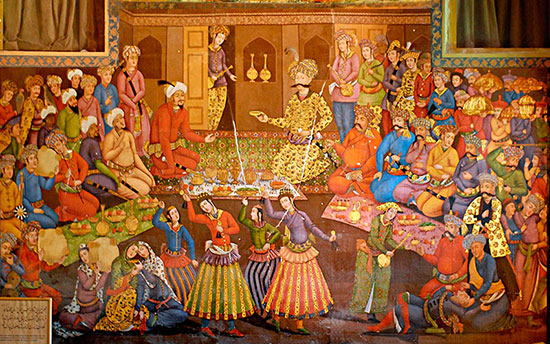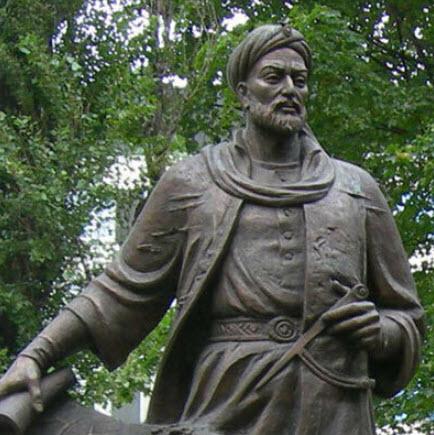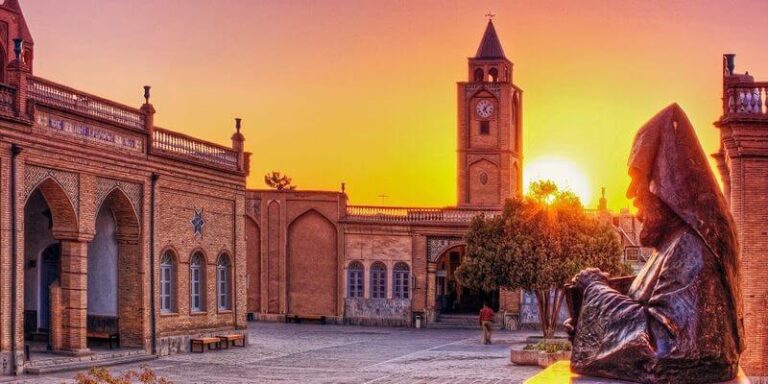
Isfahan Art Center (UNESCO Heritage)
Naqsh-e Jahan Square or Median-e Emam is a prominent historical complex in Iran. The eye-catching square hosts many tourists who travel to Esfahan to visit the historical attractions. Travelers enjoy the pleasure of watching the sunset and the square’s beauties.
Naqsh-e Jahan Square (Median Emam) is a masterwork of chief architect Sheikh Bahaee. Median Emam includes Sheikh Lotf Allah Mosque with genius interior and exterior dome decoration. Sheikh Lotf Allah Mosque was a royal mosque for Shah Abbas Safavid.
Shah Mosque (Imam Mosque) depicts Persian architecture in the Islamic era in Naqsh-e Jahan Square. Imam Mosque consists of iwans, domes, tilling and supreme engineering of a voice echoing. Ali Qapu Palace is a gallery of art in terms of music, painting and decoration in an acoustic structure.


